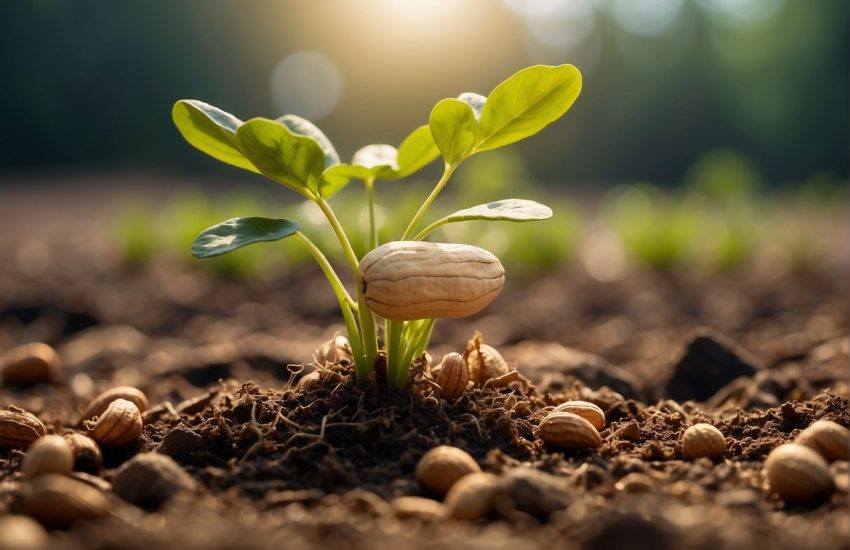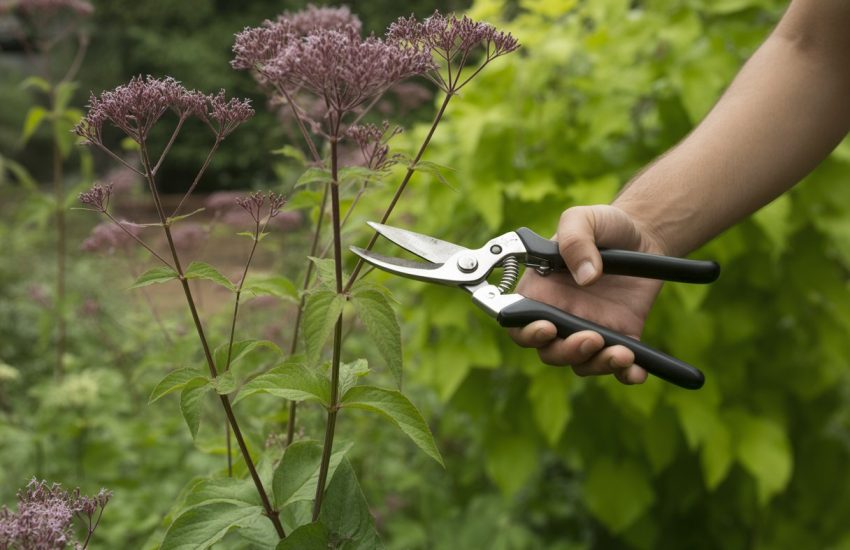Coffee Grounds in Compost: Benefits and Tips for Optimal Use
Coffee grounds are a common household waste item that can be used to create nutrient-rich compost. Composting is an environmentally friendly way to dispose of organic waste, and coffee grounds are a valuable addition to the composting process. When added to compost, coffee grounds can improve soil quality and help plants grow.
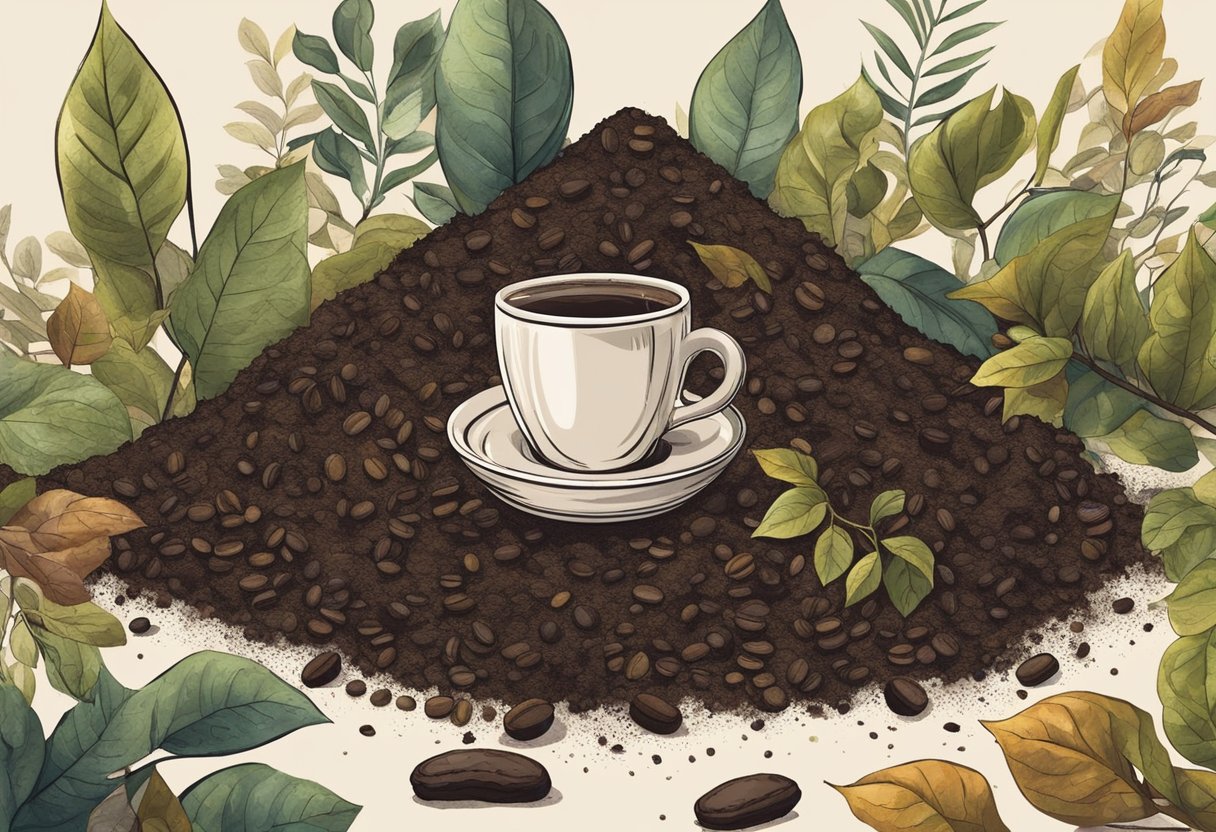
Coffee grounds are high in nitrogen, which is an essential nutrient for plant growth. Nitrogen helps plants develop healthy leaves and stems, and it is also important for the formation of chlorophyll. When coffee grounds are added to compost, they increase the nitrogen content of the compost, which can help plants grow faster and stronger.
In addition to providing nitrogen, coffee grounds can also help regulate the pH of the compost. Compost needs to be slightly acidic for optimal plant growth, and coffee grounds can help balance the pH of the compost. However, it is important to use coffee grounds in moderation, as too much can make the compost too acidic. Overall, coffee grounds are a valuable addition to any compost pile and can help create nutrient-rich soil for healthy plant growth.
Benefits of Coffee Grounds in Compost
Coffee grounds are a popular addition to compost piles due to their numerous benefits. Here are some of the benefits of using coffee grounds in compost:
Nutrient-Rich Additive
Coffee grounds are a great source of nitrogen, an essential nutrient for plant growth. They also contain other important nutrients such as calcium, magnesium, and potassium. Adding coffee grounds to your compost pile can help to increase the nutrient content of your compost, which in turn can lead to healthier plants.
Improving Soil Structure
Coffee grounds can also help to improve the structure of your soil. The organic matter in coffee grounds helps to improve soil texture and water retention. This can be especially beneficial for gardeners with sandy or clay soils, which tend to be less fertile and more difficult to work with.
Attracting Beneficial Worms
Worms are an important part of any healthy compost pile, as they help to break down organic matter and improve soil structure. Coffee grounds are a great food source for worms, and adding them to your compost pile can help to attract more of these beneficial creatures.
In summary, coffee grounds are a valuable addition to any compost pile. They provide important nutrients, help to improve soil structure, and attract beneficial worms. By adding coffee grounds to your compost pile, you can create a nutrient-rich soil amendment that will benefit your plants and garden for years to come.
How to Compost Coffee Grounds
Composting coffee grounds is a great way to reduce waste and create nutrient-rich soil for your garden. Here are some tips on how to compost coffee grounds effectively.
Proper Ratios of Greens and Browns
Composting requires a balance of “green” and “brown” materials. Greens are high in nitrogen, while browns are high in carbon. Coffee grounds are considered a green material, so it’s important to balance them with brown materials like dried leaves, straw, or shredded paper.
A good rule of thumb is to use a 2:1 ratio of browns to greens. This will help to ensure that your compost pile decomposes properly and doesn’t become too acidic.
Layering Your Compost Pile
When composting coffee grounds, it’s important to layer them properly in your compost pile. Start with a layer of brown materials, then add a layer of coffee grounds, followed by another layer of brown materials. Repeat this process until your compost pile is the desired size.
Layering your compost pile helps to ensure that the coffee grounds are evenly distributed throughout the pile and that they decompose properly.
Maintaining Moisture and Aeration
Coffee grounds are high in nitrogen, which means they can become compacted and create an anaerobic environment if not properly aerated. To avoid this, it’s important to turn your compost pile regularly to ensure that it stays well-aerated.
Additionally, coffee grounds can absorb moisture and become too wet, which can slow down the decomposition process. To avoid this, it’s important to maintain the proper moisture level in your compost pile. A good rule of thumb is to keep your compost pile as moist as a wrung-out sponge.
By following these tips, you can compost coffee grounds effectively and create nutrient-rich soil for your garden.
Coffee Grounds Composting Methods
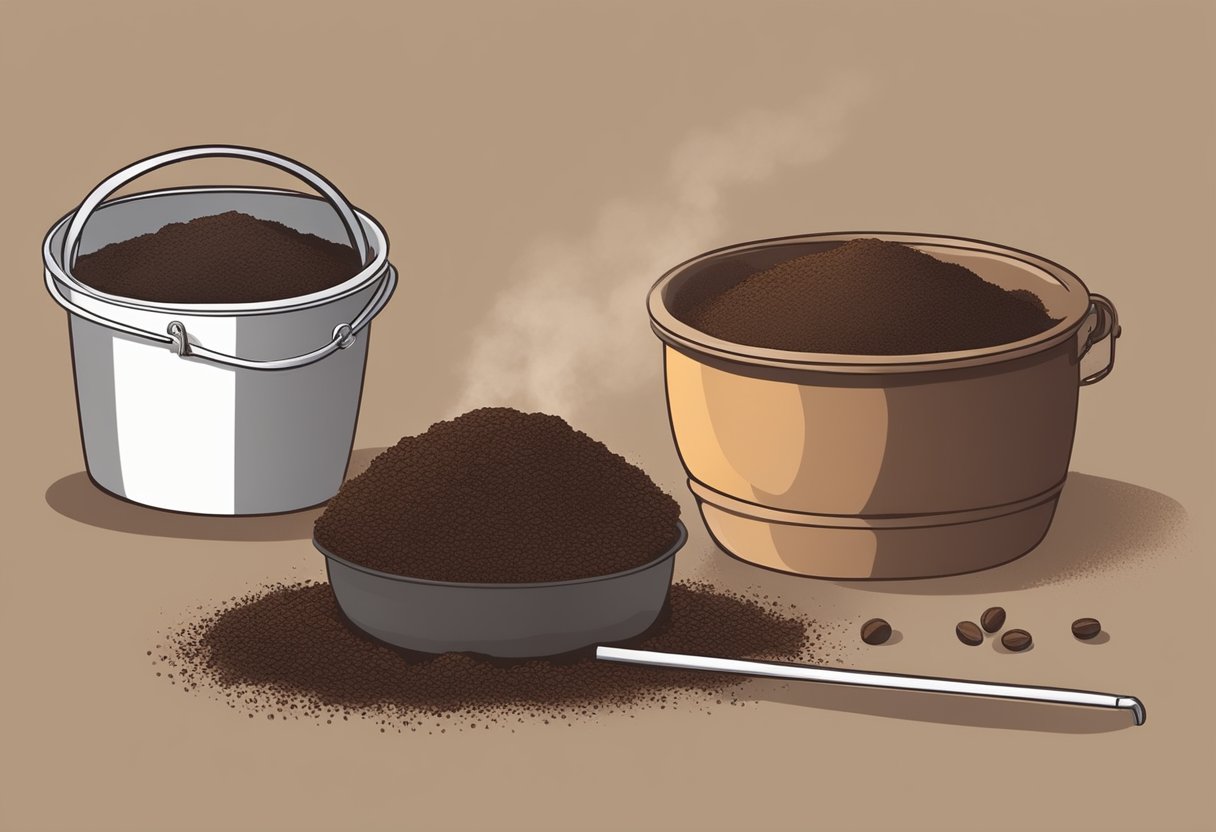
Coffee grounds are a valuable addition to compost, as they add nitrogen, phosphorus, and potassium to the mix. There are several methods to compost coffee grounds, including traditional composting, vermicomposting, and bokashi composting.
Traditional Composting
Traditional composting involves mixing coffee grounds with other organic materials such as leaves, grass clippings, and kitchen scraps. The mix should have a balance of green and brown materials, with coffee grounds considered a green material. The compost pile should be turned regularly to ensure proper aeration and decomposition.
Coffee grounds should not make up more than 25% of the compost pile, as they are high in nitrogen and can make the pile too acidic. It is also important to note that coffee grounds should not be used as the sole source of nitrogen in the compost pile.
Vermicomposting with Coffee Grounds
Vermicomposting involves using worms to break down organic materials into compost. Coffee grounds can be added to a worm bin as a source of food for the worms. However, it is important to limit the amount of coffee grounds added to the worm bin, as too much can harm the worms.
A good rule of thumb is to add no more than 10-20% coffee grounds to the worm bin. It is also important to mix the coffee grounds with other organic materials to ensure a balanced diet for the worms.
Bokashi Composting
Bokashi composting is a fermentation process that involves adding a mix of microorganisms to organic materials, including coffee grounds. The mix is then left to ferment for several weeks before being added to the compost pile.
Coffee grounds can be added to the bokashi mix as a source of nitrogen. However, it is important to limit the amount of coffee grounds added to the mix, as too much can make the mix too acidic.
In conclusion, coffee grounds are a valuable addition to compost and can be composted using traditional composting, vermicomposting, and bokashi composting methods. It is important to limit the amount of coffee grounds added to the compost pile or worm bin to ensure a balanced mix of organic materials.
Coffee Grounds and Garden Health
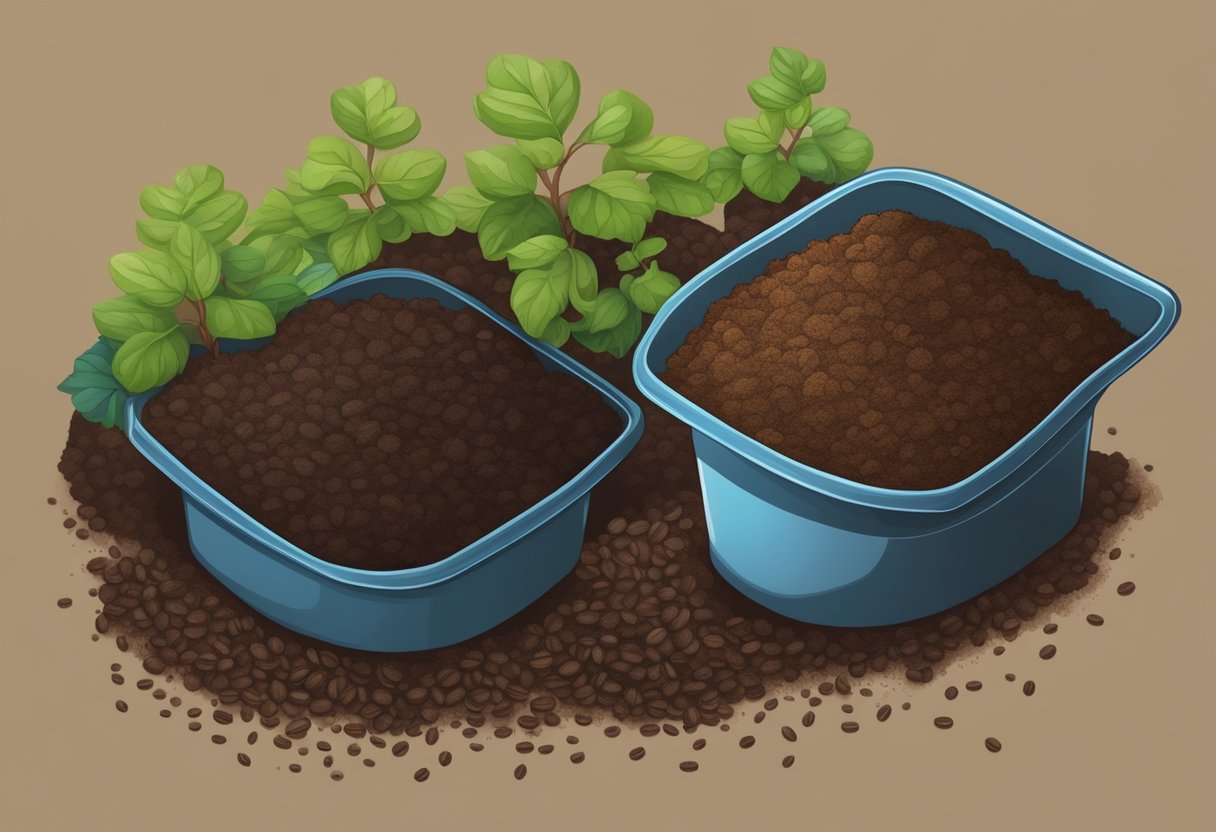
Coffee grounds are a popular addition to compost, and for good reason. They are a rich source of nitrogen, which is an essential nutrient for plant growth. In addition to providing valuable nutrients, coffee grounds can also improve soil structure and water retention, making them a valuable addition to any garden.
Acid-Loving Plants and Coffee Grounds
Coffee grounds are slightly acidic, with a pH of around 6.5. This makes them an ideal addition to the soil for acid-loving plants such as blueberries, azaleas, and rhododendrons. Adding coffee grounds to the soil around these plants can help to lower the pH, making it more acidic and creating a better growing environment for these plants.
Using Coffee Grounds as Mulch
In addition to using coffee grounds in compost, they can also be used as a mulch around plants. Coffee grounds can help to suppress weeds, retain moisture in the soil, and provide valuable nutrients to plants as they break down. When using coffee grounds as a mulch, it is important to spread them out thinly, as a thick layer can create a barrier that prevents water from reaching the soil.
Preventing Pests and Fungal Pathogens
Coffee grounds can also help to prevent pests and fungal pathogens in the garden. The caffeine and other compounds found in coffee grounds can be toxic to certain insects, making them less likely to attack plants. In addition, the high nitrogen content of coffee grounds can help to promote healthy plant growth, which can make plants more resistant to pests and diseases.
In conclusion, adding coffee grounds to compost or using them as a mulch can be a great way to improve soil health and promote healthy plant growth. Whether you have acid-loving plants or just want to improve the overall health of your garden, coffee grounds can be a valuable addition to your gardening routine.
Challenges with Coffee Grounds in Compost

Coffee grounds are a popular addition to compost piles, but they can present some challenges. Here are a few things to keep in mind when adding coffee grounds to your compost:
Managing Acidity Levels
Coffee grounds are acidic, which can be beneficial for some plants. However, too much acidity can harm the composting process and the plants that the compost is used on. It is important to monitor the pH levels of your compost and adjust as necessary. Adding a small amount of lime or wood ash can help neutralize the acidity.
Avoiding Over-Concentration of Caffeine
While caffeine can be beneficial for plants, too much caffeine can be harmful. It is important to avoid over-concentration of caffeine in your compost. This can be done by limiting the amount of coffee grounds added to the compost pile or by diluting the coffee grounds with other organic materials.
Contamination from Coffee Products
When adding coffee grounds to your compost, it is important to avoid contamination from other coffee products. Coffee filters, plastic cups, and aluminum pods should be removed before adding the coffee grounds to the compost pile. These materials can take a long time to break down and can also introduce harmful chemicals into the compost.
Overall, coffee grounds can be a great addition to compost piles when used in moderation and with care. By managing acidity levels, avoiding over-concentration of caffeine, and preventing contamination from other coffee products, coffee grounds can help create nutrient-rich compost for healthy plants.
Special Considerations for Specific Plants
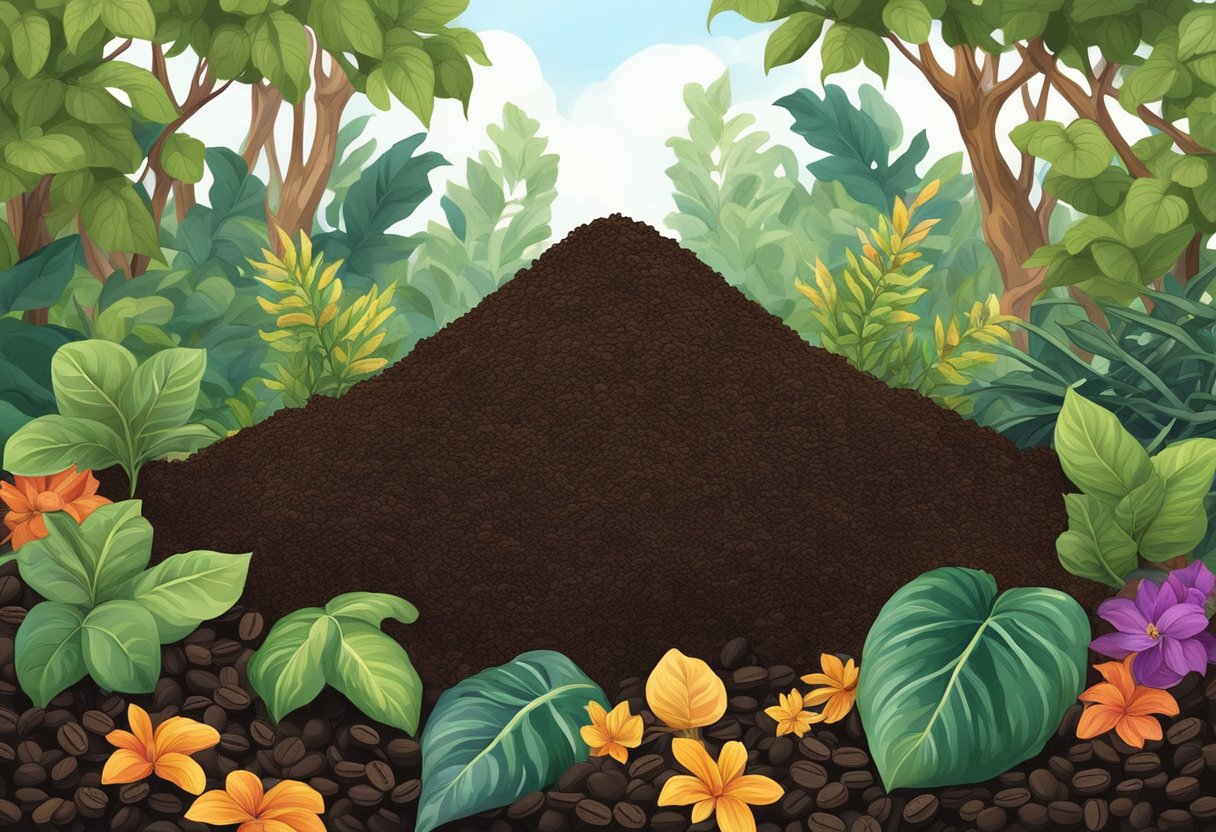
Growing Vegetables with Coffee Ground Compost
Coffee grounds can be a great addition to compost for growing vegetables. The high nitrogen content in coffee grounds can help to promote healthy plant growth and fruit production. However, it is important to use coffee grounds in moderation as too much can lead to nitrogen burn and other issues.
When using coffee grounds in compost for vegetables, it is important to mix them with other organic materials such as leaves, grass clippings, and kitchen scraps. This will help to balance the nitrogen content and create a more well-rounded compost that will benefit the plants.
Some vegetables that can benefit from coffee ground compost include tomatoes, radishes, and other root crops. However, it is important to test the soil pH regularly to ensure that it remains within the optimal range for the specific plants being grown.
Coffee Grounds for Flowering Plants
Coffee grounds can also be beneficial for flowering plants such as azaleas and blueberries. The high acidity of coffee grounds can help to lower the pH of the soil, making it more acidic and conducive to the growth of these plants.
When using coffee grounds in compost for flowering plants, it is important to mix them with other organic materials such as leaves, grass clippings, and kitchen scraps. This will help to create a more well-rounded compost that will benefit the plants.
However, it is important to use coffee grounds in moderation as too much can lead to soil acidity that is too high. This can lead to stunted growth and other issues.
Root Crops and Coffee Grounds
Root crops such as carrots, beets, and potatoes can also benefit from coffee ground compost. The high nitrogen content in coffee grounds can help to promote healthy root growth and overall plant health.
When using coffee grounds in compost for root crops, it is important to mix them with other organic materials such as leaves, grass clippings, and kitchen scraps. This will help to balance the nitrogen content and create a more well-rounded compost that will benefit the plants.
However, it is important to use coffee grounds in moderation as too much can lead to nitrogen burn and other issues. It is also important to test the soil pH regularly to ensure that it remains within the optimal range for the specific plants being grown.
Tips for Using Coffee Grounds in Compost
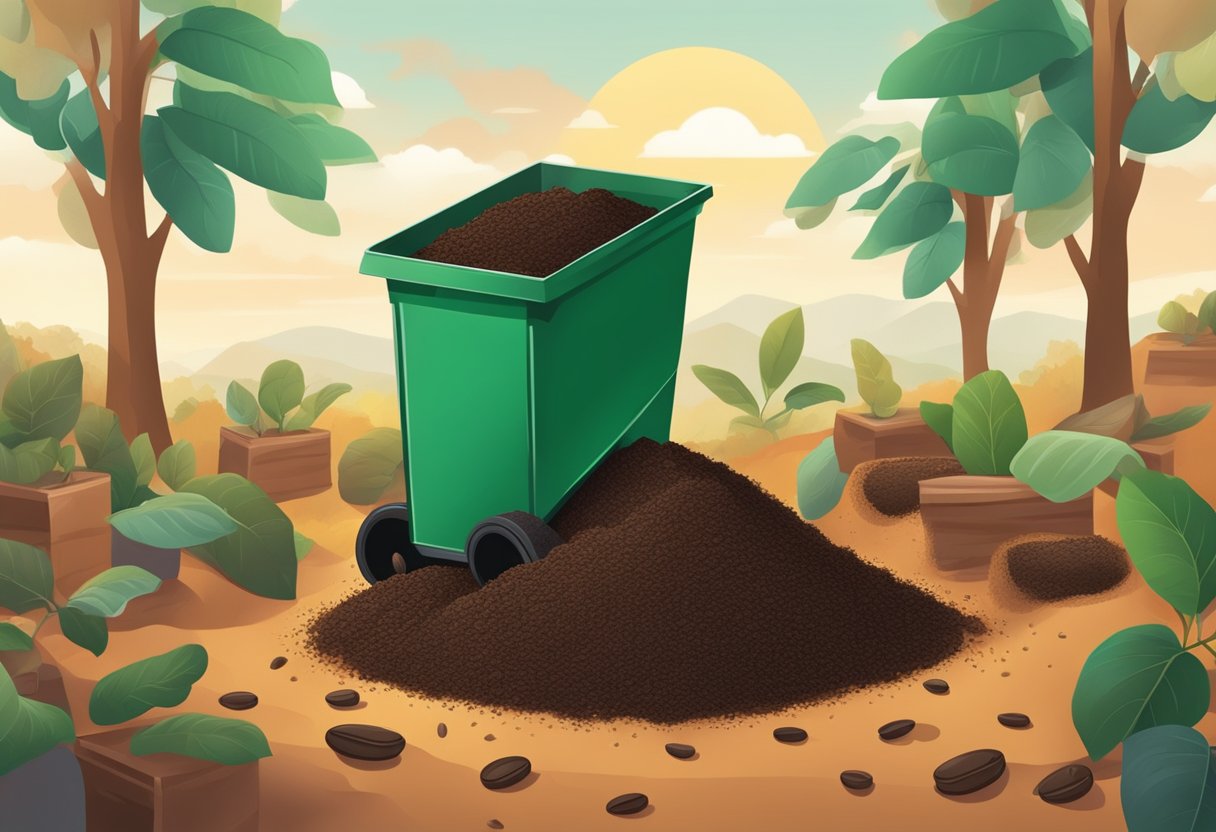
Testing Soil Before Adding Coffee Grounds
Before adding coffee grounds to a compost bin or tumbler, it’s important to test the soil to ensure that it’s not already too acidic. Coffee grounds are naturally acidic, and adding them to soil that is already acidic can be harmful to plants. A simple soil test kit can be purchased from a garden center or online to determine the pH level of the soil. If the soil is already acidic, it’s best to avoid adding coffee grounds or to use them sparingly.
Proper Storage and Handling of Coffee Grounds
Coffee grounds should be stored in a dry, airtight container to prevent mold growth. It’s also important to handle coffee grounds with gloves to avoid any potential skin irritation. When adding coffee grounds to a compost bin or tumbler, it’s best to mix them with other organic materials to prevent clumping and to ensure even distribution.
Integrating Coffee Grounds into Composting Systems
Coffee grounds can be a valuable addition to a composting system, but it’s important to use them in moderation. Too many coffee grounds can create a dense, compacted layer in the compost bin or tumbler, which can slow down the composting process. A good rule of thumb is to use no more than 20% coffee grounds in a composting system. It’s also important to mix the coffee grounds with other organic materials, such as leaves, grass clippings, and vegetable scraps, to create a balanced compost mixture.
Overall, coffee grounds can be a great addition to a composting system when used properly. By testing the soil before adding coffee grounds, storing and handling them correctly, and integrating them into composting systems in moderation, gardeners can create nutrient-rich compost that will benefit their plants and soil.
Frequently Asked Questions
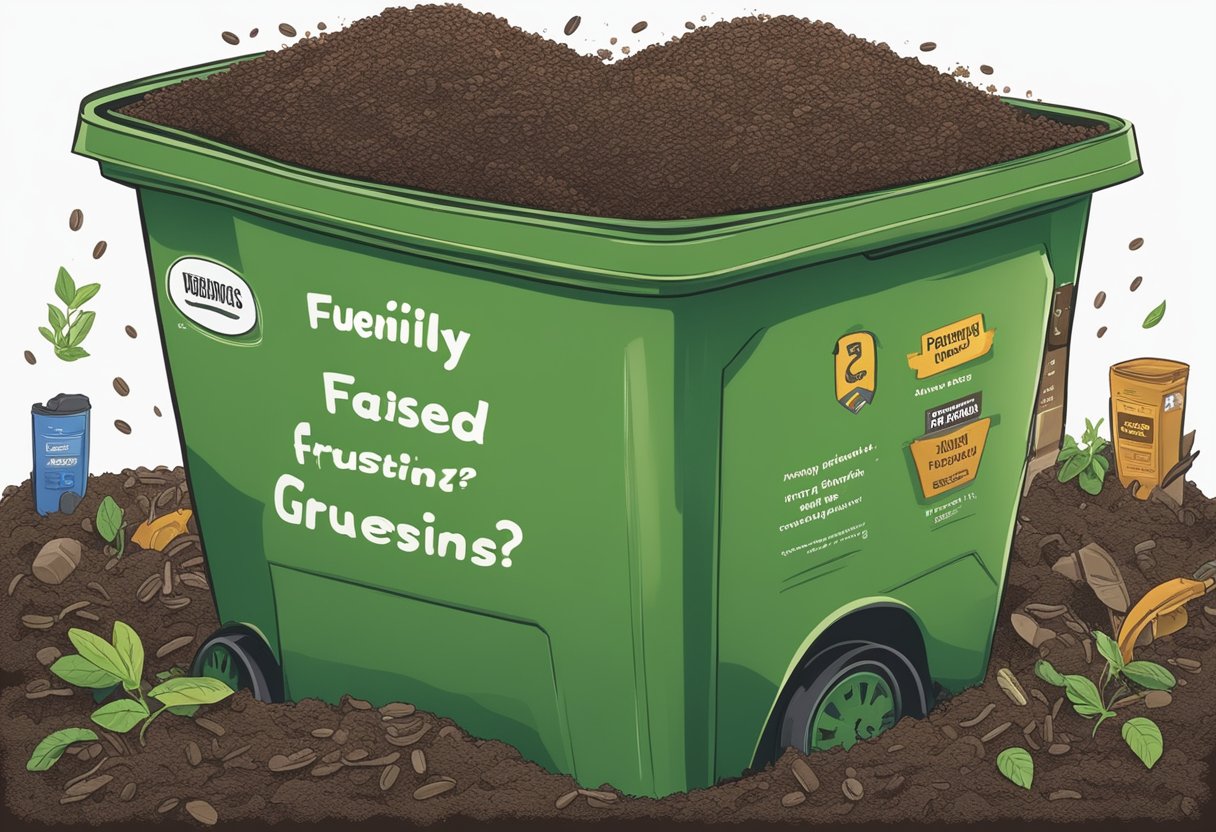
What are the benefits of adding coffee grounds to my compost?
Coffee grounds are a great addition to compost because they are rich in nitrogen, which is essential for plant growth. They also help to improve soil structure and water retention, and can attract beneficial microorganisms that aid in the decomposition process.
How can coffee grounds be used as fertilizer for plants?
Coffee grounds can be used as a fertilizer by spreading them directly on the soil or mixing them into compost. They release nitrogen slowly over time, which provides a steady supply of nutrients to plants. However, it’s important to use coffee grounds in moderation to avoid over-fertilization.
Are there any risks of using too much coffee grounds in compost?
Using too much coffee grounds in compost can lead to an imbalance of nutrients, which can harm plants. Coffee grounds are also acidic, so adding too much can lower the pH of the soil. To avoid these issues, it’s recommended to use coffee grounds in moderation and balance them with other compost materials.
Which plants should not be given coffee grounds?
Plants that prefer alkaline soil, such as tomatoes and peppers, should not be given too many coffee grounds as they can lower the pH of the soil. Additionally, some plants are sensitive to caffeine, such as geraniums and some herbs, so it’s best to avoid using coffee grounds with these plants.
Do coffee grounds count as a green or brown compost material?
Coffee grounds are considered a green compost material, along with other nitrogen-rich materials like grass clippings and vegetable scraps. However, they can also be used as a brown compost material when mixed with other materials like leaves and straw.
What is the decomposition rate of coffee grounds in a compost pile?
Coffee grounds decompose relatively quickly in a compost pile, usually within a few weeks to a few months. However, the rate of decomposition depends on factors like temperature, moisture, and the size of the coffee grounds. To speed up decomposition, it’s recommended to mix coffee grounds with other compost materials and turn the pile regularly.

